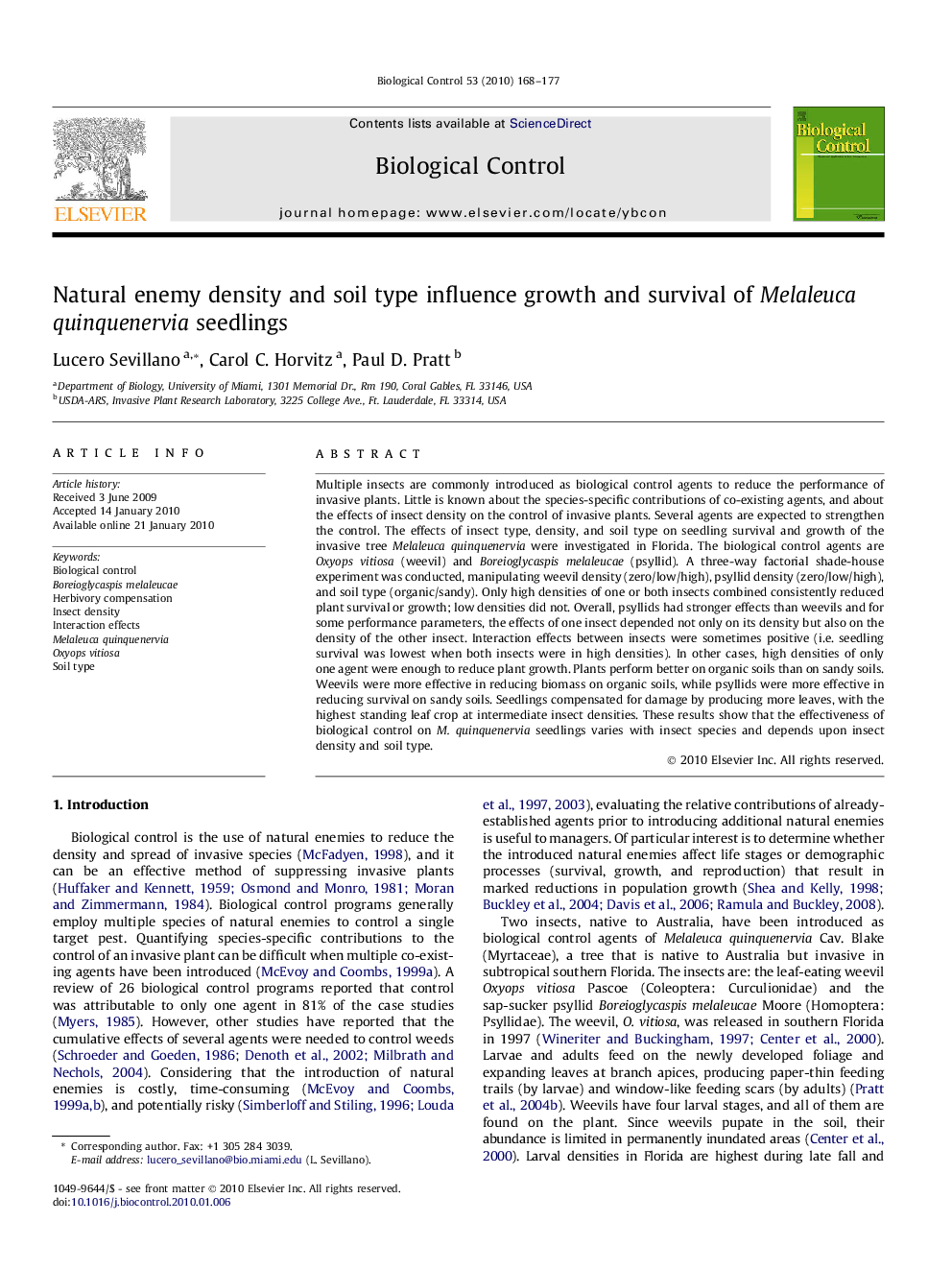| Article ID | Journal | Published Year | Pages | File Type |
|---|---|---|---|---|
| 4504474 | Biological Control | 2010 | 10 Pages |
Multiple insects are commonly introduced as biological control agents to reduce the performance of invasive plants. Little is known about the species-specific contributions of co-existing agents, and about the effects of insect density on the control of invasive plants. Several agents are expected to strengthen the control. The effects of insect type, density, and soil type on seedling survival and growth of the invasive tree Melaleuca quinquenervia were investigated in Florida. The biological control agents are Oxyops vitiosa (weevil) and Boreioglycaspis melaleucae (psyllid). A three-way factorial shade-house experiment was conducted, manipulating weevil density (zero/low/high), psyllid density (zero/low/high), and soil type (organic/sandy). Only high densities of one or both insects combined consistently reduced plant survival or growth; low densities did not. Overall, psyllids had stronger effects than weevils and for some performance parameters, the effects of one insect depended not only on its density but also on the density of the other insect. Interaction effects between insects were sometimes positive (i.e. seedling survival was lowest when both insects were in high densities). In other cases, high densities of only one agent were enough to reduce plant growth. Plants perform better on organic soils than on sandy soils. Weevils were more effective in reducing biomass on organic soils, while psyllids were more effective in reducing survival on sandy soils. Seedlings compensated for damage by producing more leaves, with the highest standing leaf crop at intermediate insect densities. These results show that the effectiveness of biological control on M. quinquenervia seedlings varies with insect species and depends upon insect density and soil type.
